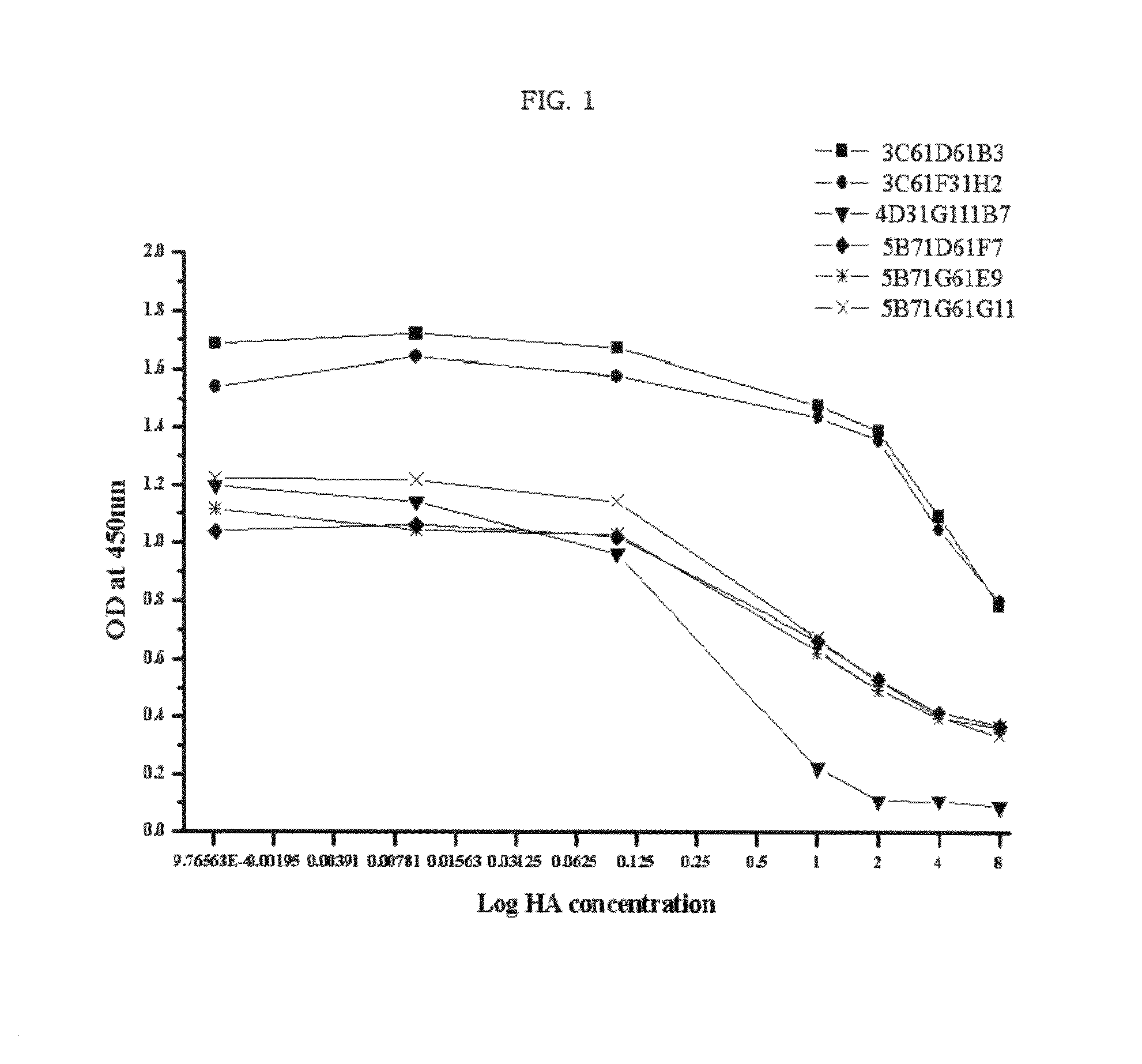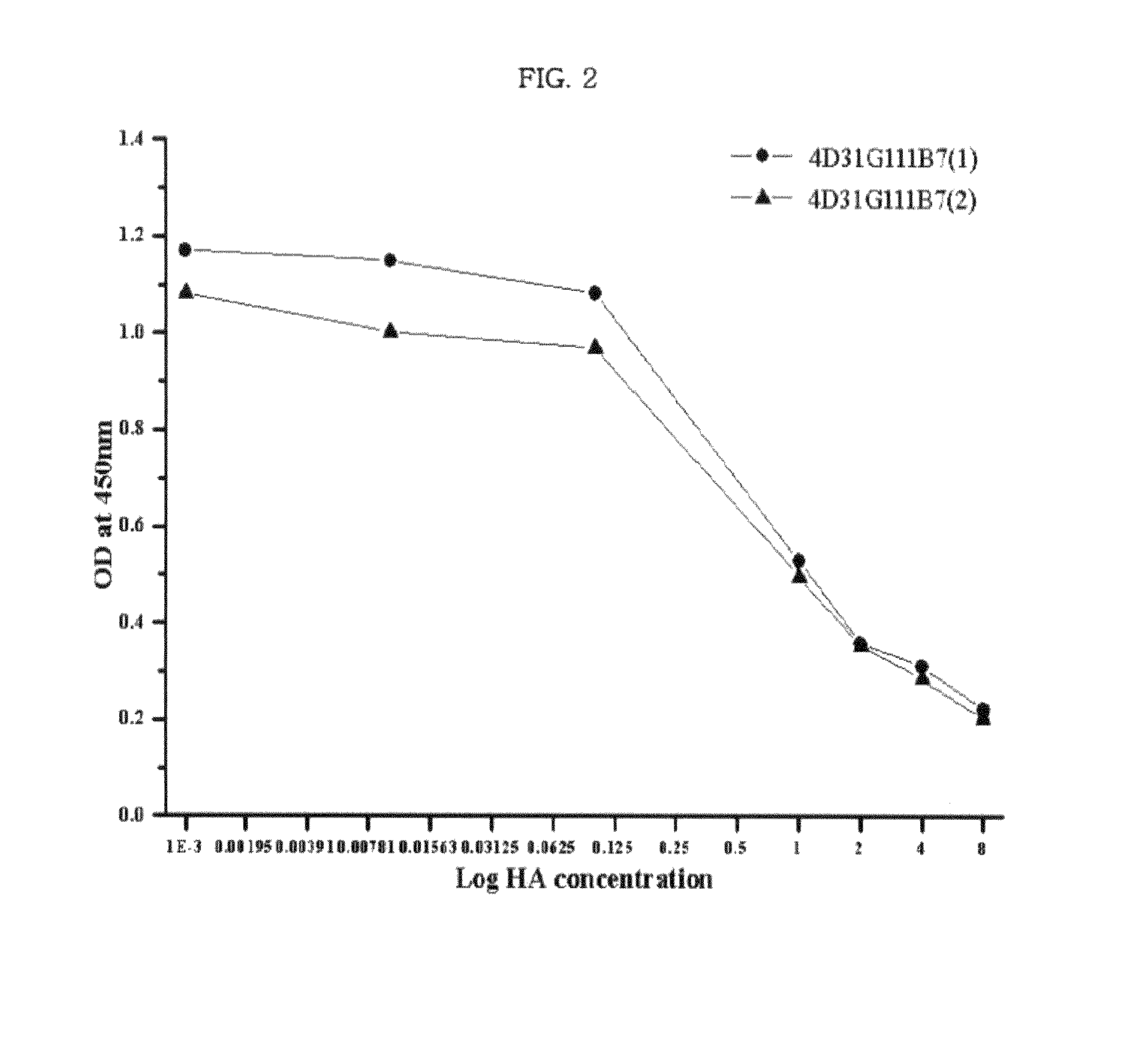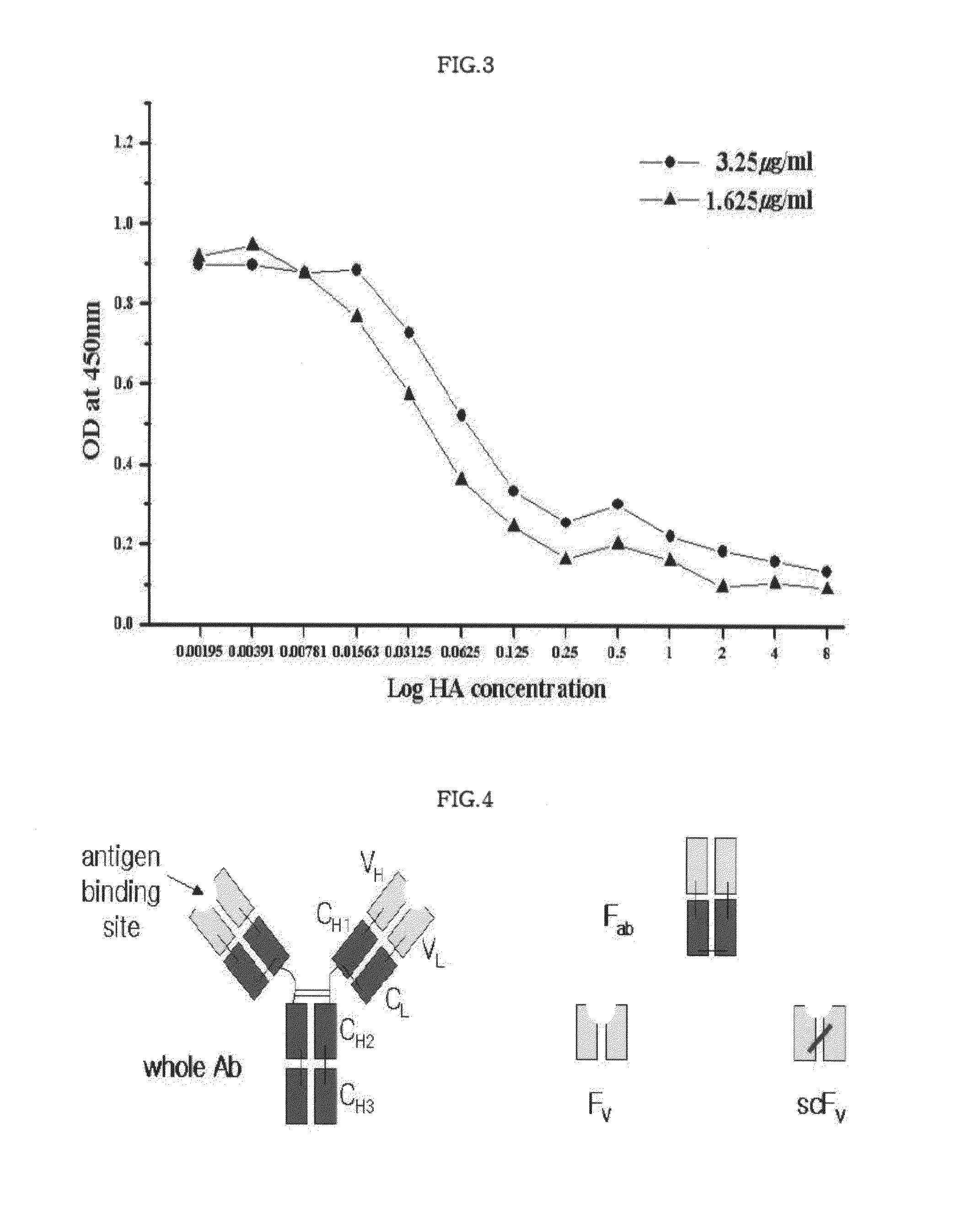Monoclonal antibody for hippuric acid antigen
a monoclonal antibody and hippuric acid technology, applied in the field of monoclonal antibodies, can solve the problems of numbing the olfactory sense, hepatic and renal damage, neuropathy and cerebral injury, and individual adverse effects, and achieves high competitive inhibition, no cross-reactivity, and high specificity and affinity.
- Summary
- Abstract
- Description
- Claims
- Application Information
AI Technical Summary
Benefits of technology
Problems solved by technology
Method used
Image
Examples
example 1
Synthesis of Immunogen and Assay Antigen
[0050]Hippuric acid (HA) (Sigma, USA) was conjugated with bovine serum albumin (BSA) (Product No. 21555, Sigma, USA) or ovalbumin (OVA) (Product No. A-5378, Sigma, USA) as a carrier protein. The resulting BSA-HA conjugate was used as an immunogen, and the resulting OVA-HA conjugate was used as an assay antigen. Attachment of hippuric acid to the carrier protein was carried out by a direct binding method and a method of forming a conjugate using the cross-linkers ACA and SA (Pilch and Czech, 1979). First, hippuric acid, DCC and NHS were dissolved in DMF, were reacted with gentle stirring at room temperature for 2 hours, and centrifuged. The resulting supernatant was added to a solution in which carrier proteins were dissolved, and the reaction materials were reacted with gentle stirring at room temperature for 4 hours. After centrifugation and removal of precipitates thus formed, the supernatant was dialyzed two times to remove the remaining DM...
example 2
Immunization of Mice
[0051]With modification of methods described by Kohler and Milstein (1975), and Doyen et al (1985), mice were immunized by combination of intraperitoneal injection and subcutaneous injection. For this purpose, 109 μl of a BSA-HA conjugate (based on BSA concentration) and 46 μl of a BSA-ACA-HA conjugate (based on BSA concentration) were respectively mixed with complete Freund's adjuvants in a mixing ratio of 1:1. BALB / c male mice (Samtaco, Osan, Korea) (n=6, 5-week old, and acclimated for 1 week) were divided into 3 groups, each consisting of 2 animals. Mice of each group were immunized by intraperitoneal injection of each mixture. Here, an immunizing amount of the mixtures did not exceed a dose of 300 μl / animal. Then, animals were immunized three times with equal amounts of immunogens in admixture with incomplete Freund's adjuvants, at an interval of 2 weeks after initial immunization,
[0052]In order to confirm whether immunization of animals was successfully achi...
example 3
Cell Fusion
[0053](1) Preparation of Immunized Lymphocytes
[0054]Antibody titer of anti-sera of immunized mice was determined by an indirect ELISA method, and mice showing the highest antibody titer were selected. The selected mice were treated by intravenous injection of 100 μg of an HA-BSA conjugate, dissolved in PBS 3 days prior to cell fusion, into tail veins of animals. The thus-treated animals were sacrificed by cervical dislocation and disinfected with 70% ethanol. An abdominal incision was made and spleens were removed from the animals. The spleens were gently washed with 10 mL of RPMI 1640 medium (Product No. 31800-022, Gibco BRL, USA), and spleen lymphocytes were collected in 30 mL of RPMI 1640 medium, using a cell dissociation sieve-tissue grinder kit. The cells were sedimented by centrifugation at 400×g, and leucocyte components were hemolyzed and separated using a red blood cell lysis buffer in which 8.3 g / L of ammonium chloride was contained in a 0.01M Tris-HCl buffer, p...
PUM
| Property | Measurement | Unit |
|---|---|---|
| boiling point | aaaaa | aaaaa |
| boiling point | aaaaa | aaaaa |
| melting point | aaaaa | aaaaa |
Abstract
Description
Claims
Application Information
 Login to View More
Login to View More - R&D
- Intellectual Property
- Life Sciences
- Materials
- Tech Scout
- Unparalleled Data Quality
- Higher Quality Content
- 60% Fewer Hallucinations
Browse by: Latest US Patents, China's latest patents, Technical Efficacy Thesaurus, Application Domain, Technology Topic, Popular Technical Reports.
© 2025 PatSnap. All rights reserved.Legal|Privacy policy|Modern Slavery Act Transparency Statement|Sitemap|About US| Contact US: help@patsnap.com



